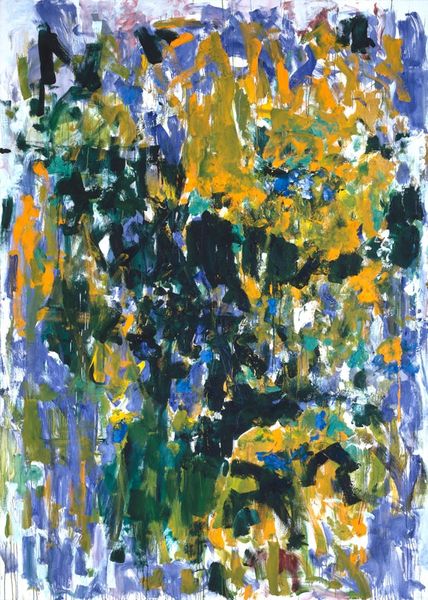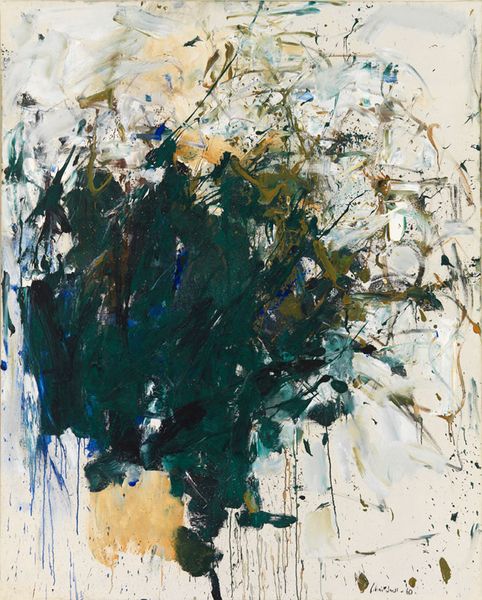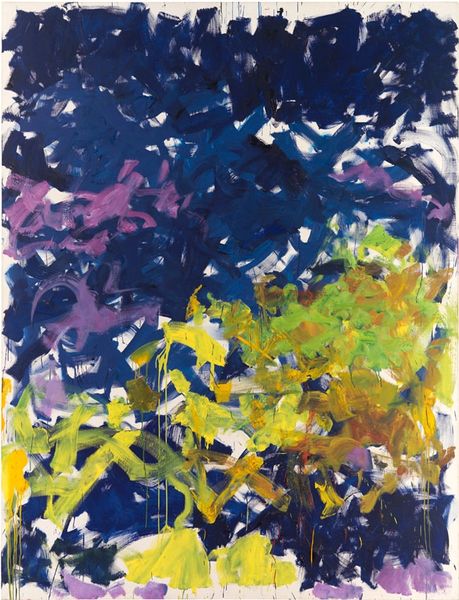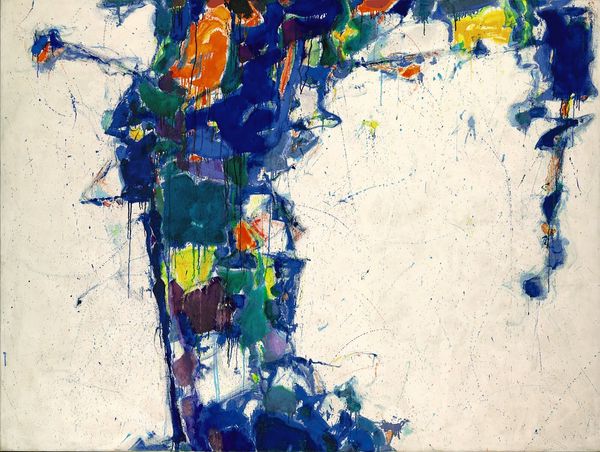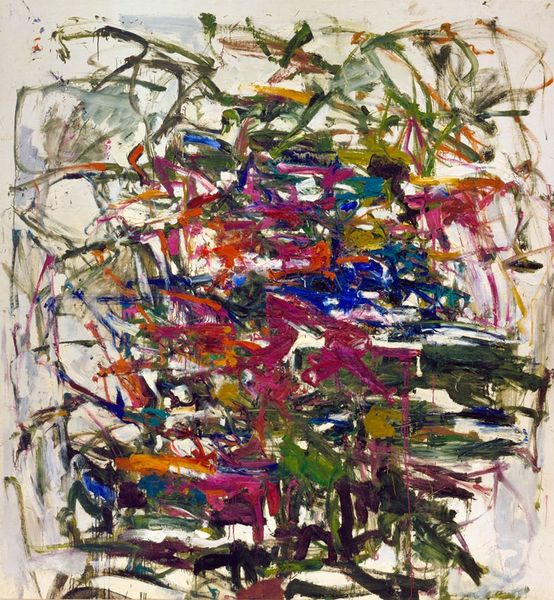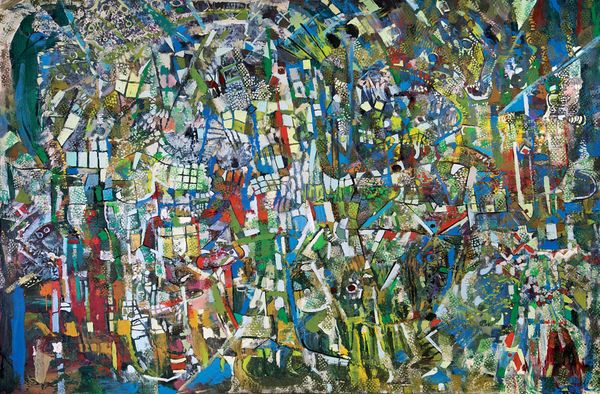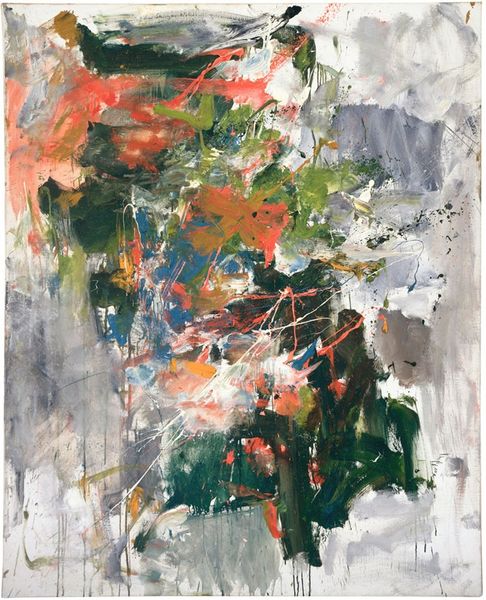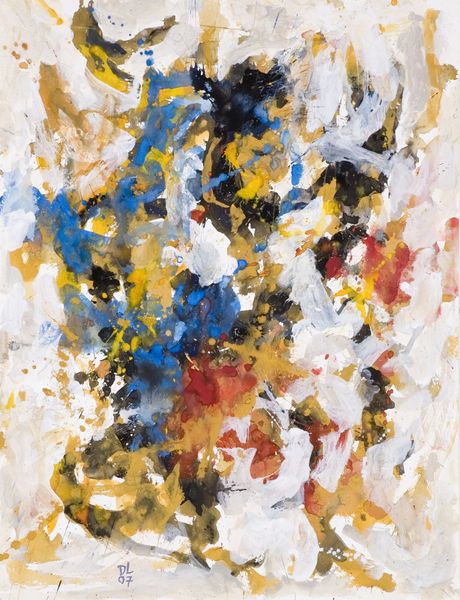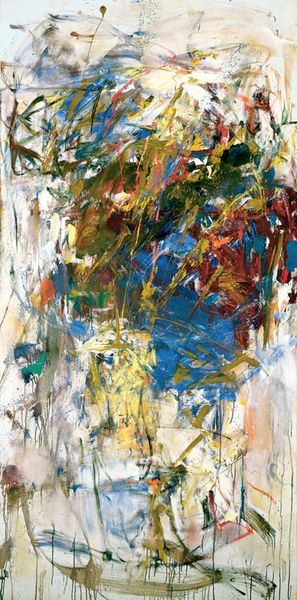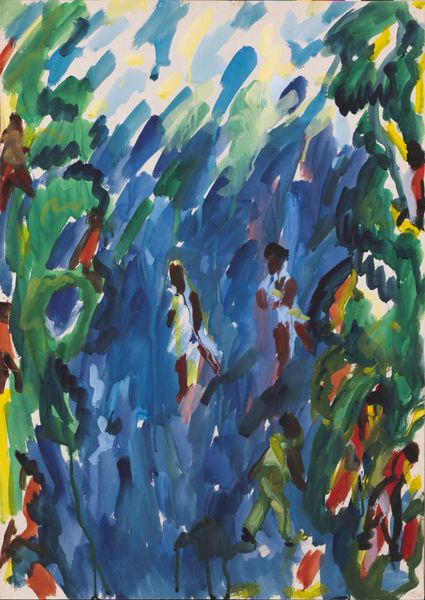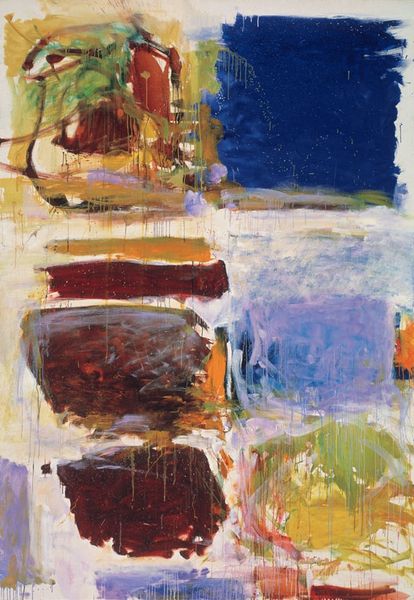
Copyright: Joan Mitchell,Fair Use
Editor: This is a large untitled canvas by Joan Mitchell from 1977, and she’s used acrylic paint. The blues and greens create a really intense visual field; I’m initially struck by its energy. What's your take on it? Curator: Well, beyond the visceral impact, I see it as a profound commentary on the subjugation of the natural world. Mitchell was deeply engaged with second-wave feminism and environmental concerns. Can we read this "landscape" as a challenge to the patriarchal gaze that historically dominates landscape painting? Consider the frenetic energy—is it expressive of the struggle against oppressive systems? Editor: I see what you mean. So, the act of abstracting the landscape itself becomes a kind of rebellious act? Instead of a passive scene, it’s an active expression? Curator: Precisely! Mitchell, as a woman in a male-dominated art world, was constantly negotiating her own identity. Abstraction becomes a powerful tool to dismantle conventional representations of femininity and nature, perhaps revealing a personal truth, untethered to patriarchal constraint. How does it feel different knowing her lived experience? Editor: That reframes my perspective. I was just seeing colors, but now I'm thinking about her agency, and how this could be about claiming space, even within abstraction. Curator: It encourages us to question not just what we see, but how our own social positioning shapes our interpretation. Consider how class, race, and gender influence your reading of the work. Does that lead you somewhere new? Editor: It’s a lot to unpack! It definitely shows me the importance of considering the artist’s perspective and the wider context. Curator: Absolutely. Art invites us to constantly renegotiate meaning, understanding that interpretation is always fluid and rooted in lived experience.
Comments
No comments
Be the first to comment and join the conversation on the ultimate creative platform.
